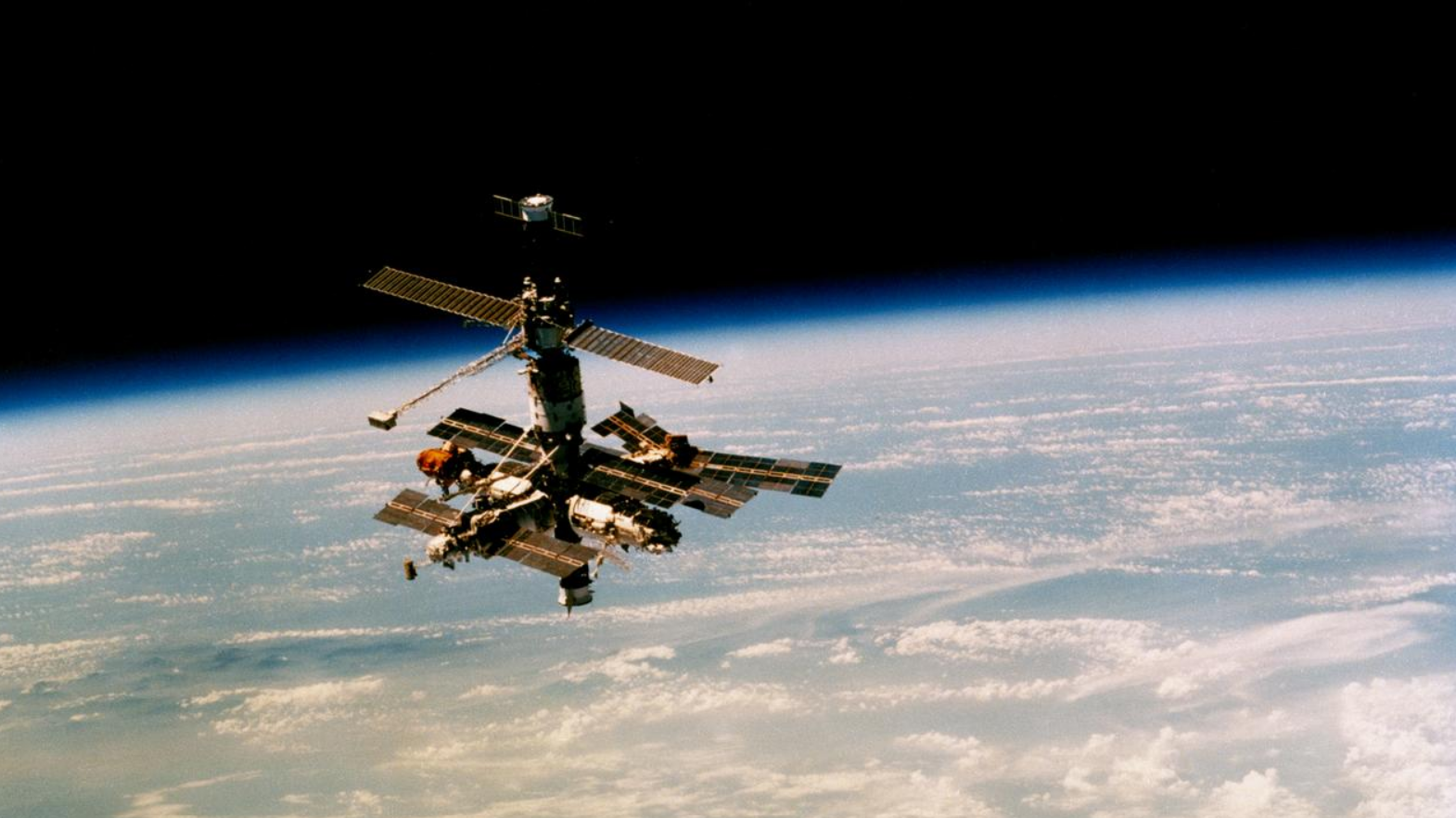On May 18, 1991, cosmonaut Sergei Krikalev departed Earth for the Soviet space station Mir. While he was up there, the country that had sent him ceased to exist, making Krikalev – for a few months at least – the “last Soviet citizen”.
Krikalev grew up in Leningrad (which he effectively watched become St Petersburg from space) and obtained a mechanical engineering degree before going to work as a rocket engineer at NPO Energia, where, among other projects, he worked as part of the rescue team when the Salyut 7 space station failed in 1985. Shortly thereafter, he was selected as a cosmonaut and spent years in training, working on everything from repairing the space station to conducting spacewalks.
Unfortunately, his training didn’t incorporate what to do when you are left in space with no official space organization (or country), which on his 1991 mission aboard Mir would have been much more useful.
The trip started off badly. As the spacecraft carrying Krikalev and two others approached Mir the targeting system failed, meaning Krikalev had to dock manually, with any wrong move being potentially fatal. Keeping a cool head, he docked and the cosmonauts – plus the first British astronaut Helen Sharman – climbed on board.
Krikalev loved being on Mir, which was incredibly fortunate. As well as seeing Earth from the viewing port, he loved “the sense of freedom which you experience in weightlessness,” he told The Guardian in 2015. “[Y]ou feel like a bird that is able to fly!”

The Soviet Mir Space Station was described as a “death trap” that was “held together by baling wire, duct tape, and healthy doses of WD-40.”
Image credit: MSFC/NASA
He performed his duties as normal, while below the Soviet Union began to strain further and crack. News did reach them on Mir, but it was sparse.
“It was a long process and we were getting the news, not all at once, but we heard about the referendum, for example,” Krikalev explained. “I was doing my job and was more worried about those on the ground – our families and friends – we had everything we needed!”
Soon, even the space station was affected by the politics going on 358 kilometers (222 miles) below. With Kazakhstan (among others) pushing for independence, Soviet President Mikhail Gorbachev announced that a Kazakh cosmonaut would board Mir in order to appease the government.
Though not as much was known about the effects of extended stays in space then, Krikalev was aware of some of the risks of staying on Mir for so long.
“Do I have enough strength? Will I be able to readjust for this longer stay to complete the program?” Krikalev reportedly posed in an interview with Russian media. “Naturally, at one point I had my doubts.”
In October 1991, the Soyuz TM-13 mission arrived at Mir. This unorthodox mission carried Soviet commander Alexander Volkov and Kazakh cosmonaut Toktar Aubakirov, along with Austrian astronaut Franz Viehböck. The presence of Aubakirov, the first person from Kazakhstan to go to space, was used as a tool to persuade the then-Kazakh SSR to continue hosting launches from Baikonur Cosmodrome.
However, neither Aubakirov nor Viehböck had been extensively trained and were not prepared for long-duration Mir operations, meaning they could not replace Krikalev as a flight engineer. After their short stay of just over one week, they returned to Earth with the departing crew, leaving Krikalev and fellow Soviet Volkov.
Small and claustrophobic as well as high above Earth, Mir probably wasn’t the best place to be with very little company. It was invariably described as a “death trap” that was “held together by baling wire, duct tape, and healthy doses of WD-40,” as well as “derelict” and a “lemon”. In terms of things you’d rather be stranded in, a derelict oiled-up lemon isn’t exactly top of the list.
Then, on December 25, 1991, the Soviet Union finally collapsed. With the collapse, there was even less money for a mission that would relieve Krikalev of his duties. If all else failed, there was the Soyuz capsule that could be used to escape, though this could mean sacrificing the space station.
“The strongest argument was economic because this allows them to save resources here,” Krikalev said while still on Mir. “They say it’s tough for me – not really good for my health. But now the country is in such difficulty, the chance to save money must be top priority.”
Deals were struck between America and Russia, gaining the funding needed to send more cosmonauts and astronauts into orbit. On March 25, 1992, having spent a then-record 311 consecutive days in space, Krikalev finally returned to Earth along with Volkov and a German astronaut called Klaus-Dietrich Flade.
When Krikalev and Volkov had left Earth, they had been citizens of a state that now no longer existed, earning them the nickname of the “last Soviet citizens.”
Despite spending a lot more time in space than he’d intended, Krikalev went straight back to training upon his return, and ended up clocking up 803 days in space, breaking previous records for time spent above the Earth. In calculations by Universe Today, thanks to relativity and time dilation, he has traveled into the future by a whopping 0.2 seconds.
He went into space as a Soviet citizen and came down in a different state, in a different time to everyone else around him.
A previous version of this story was published in September 2020.
Source Link: Sergei Krikalev: A Cosmonaut Left Stranded In Space When The Soviet Union Collapsed